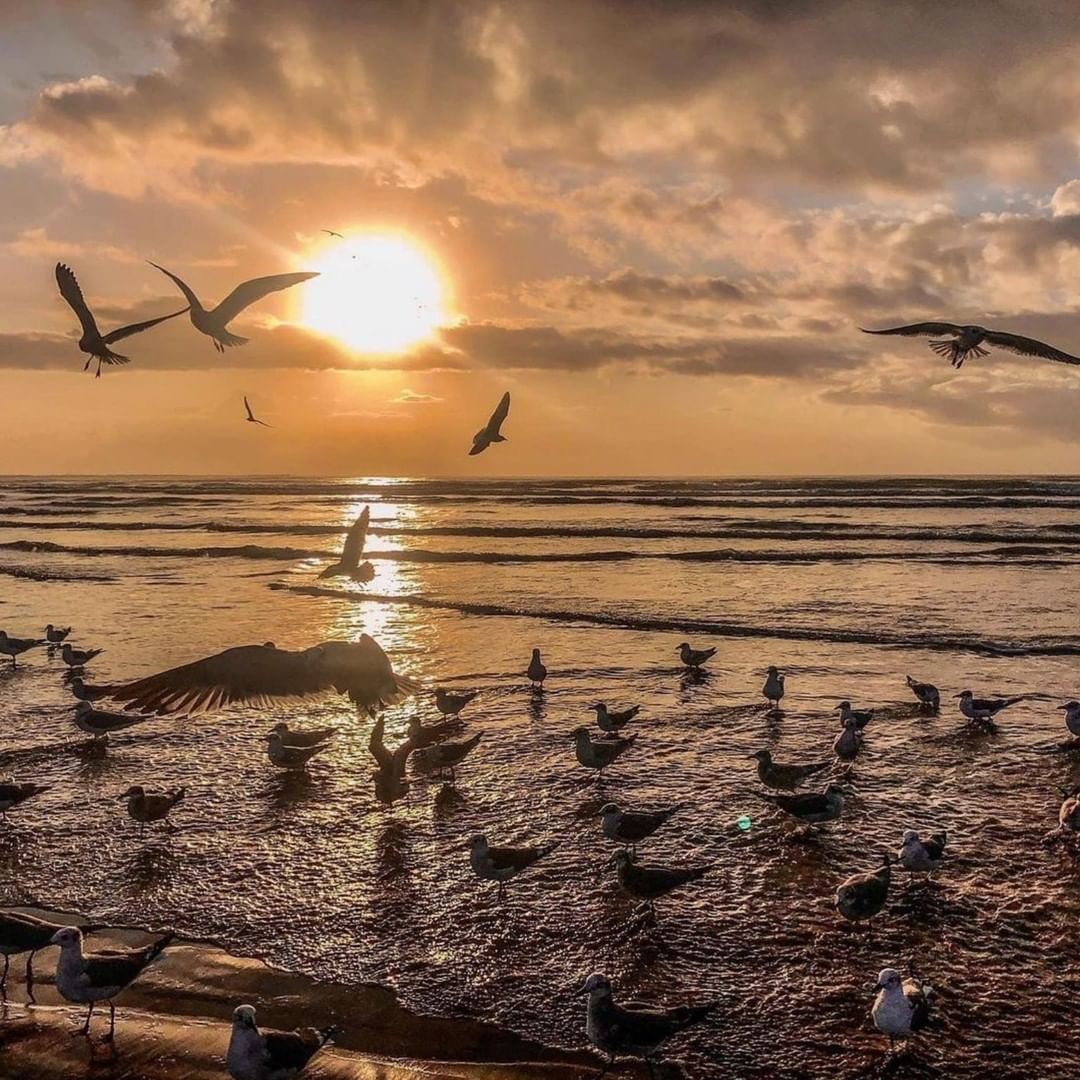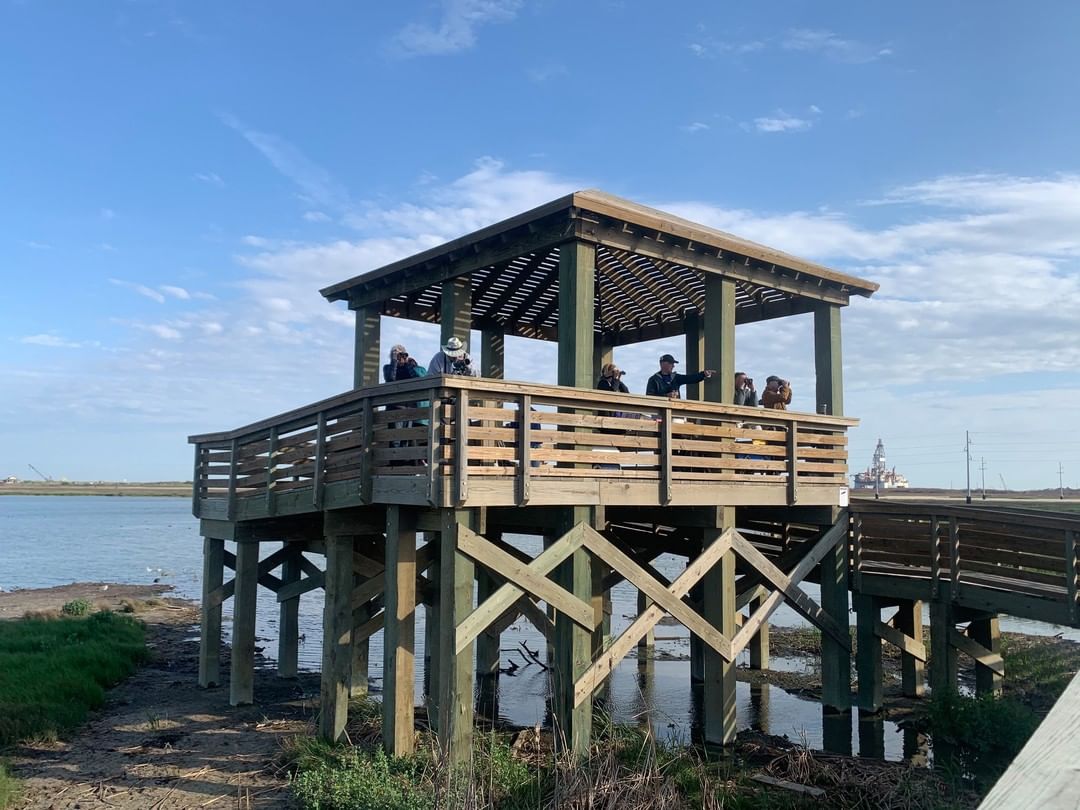For both serious and amateur birdwatchers, the Leonabelle Turnbull Birding Center in Port Aransas, Texas, is the best place to go. You can get a firsthand look at what it’s like to live in a wetland here as a stop along the Great Texas Birding Trail. You can also take in the expansive marsh views and visit a birder’s paradise. Built-in 2014, this coastal birding facility serves as a crucial haven for both migratory and resident birds.
Find out more about the Leonabelle Turnbull Birding Center as you read this article.
Location
The Birding Center is situated on the southern end of Ross Avenue, directly across from the Community Park. The site’s entrance is flanked by educational signage, pollinator gardens, a sizable mural, bird drips, and gardens. In the center, there are interactive exhibits, a butterfly garden, and an observation tower where visitors can get a bird’s-eye view of the marsh. In addition, the Birding Center offers year-round classes on topics like photography and ornithology (the study of birds) for people of all ages. The Birding Center is open from 8 a.m. to 12 p.m. and 1 p.m. to 5 p.m., Monday through Friday, and is frequently crowded with tourists.
What to expect
When Hurricane Harvey struck the area in August 2017, the old boardwalk was destroyed. However, there is currently a new, enormous boardwalk that runs parallel to the shore and an observatory. The walkway is made of a synthetic material with perforations that will allow a surge to flow inland and out again without damaging the walks, and the supports are at least 12 inches square.
Both this boardwalk and the observation tower offer excellent opportunities to see wildlife. The boardwalk, which stretches above shallow, brackish water, provides panoramic views of a wide variety of marine life as well as hundreds of resident and migratory birds, including roseate spoonbills, egrets, and herons. Visitors may also appreciate the chance to see manatees and dolphins swimming nearby.
As was already mentioned, visitors can also stroll along the 1,000-foot-long Butterfly Garden Trail, which meanders through a lush garden of flowers and herbs and serves as a habitat for both local and monarch butterfly species that are migrating. A fantastic opportunity for nature photography is offered by the boardwalk and observation tower.
The boardwalk also provides visitors with plenty of chances to take in the gorgeous views of the Indian River Lagoon, where they can watch for manatees, dolphins, and a range of birds and other wildlife.
What You’ll See
In addition to ducks, pelicans, wading birds, and songbirds, visitors frequently spot a large American alligator here known as “Boots.” You can see shorebirds like the Black-necked Stilt from the observation platform, as well as waterfowl like the Black-bellied Whistling-Duck and Cinnamon Teal, grebes (the least common), herons and egrets, cormorants, and the bright pink Roseate Spoonbill, the city bird of Port Aransas. Be on the lookout for hummingbirds, warblers, and other songbirds during migration as the parking area and land along the boardwalk are planted with native species.
Whether you’re an experienced birder or a novice, there is something for everyone to enjoy at the park. A great variety of wildlife can be spotted in the park, making it an ideal destination for bird watchers and wildlife photographers.
Tips for Planning your Birding Trip
Now, let’s go over these easy suggestions to better get ready for your next visit to the Birding Center.
- Choosing the destinations or sites you want to see Make a decision in advance as to whether you want to travel widely and see many places or spend more time in fewer places or in one birding destination only. Budgeting, packing, and reservations will all benefit from that choice.
- Study a regional field guide. Why waste time trying to determine which birds can be found in the area where you plan to go birding? Nearly every region of the world has a regional field guide, which should be available for your use. Even seasoned birders should bring a suitable field guide when going to a new birding location, if only for the range maps. Regional field guides may make your birding experience better and more prepared.
- Make use of online resources. Our ability to quickly find extremely specific information has improved thanks to technology. Information on birds fits into this as well. You can determine the ideal locations to find your target species using online resources like eBird and the American Birding Association’s conveniently compiled state and local bird sighting email lists. Also, upon visiting the Birding Center, you may consult them on the best bird watching spots and the best times to visit. All over the world, birders always seem willing and eager to help other birders.
- Plan your schedule and route. Plan your schedule and route. Prior to arriving, be certain of your destination so that you can avoid wasting time planning when you could be birding. The birds are typically most active in the morning and evening, wherever you are in the world. Plan your day so that you are in prime bird-watching locations during these hours. You can get to your next destination in the middle of the day. Additionally, it’s a good idea to allow for more time than necessary for travel between sites. Even more so if you are birding along the way, it is unusual to complete a two-hour drive between birding locations in just two hours.
- Create a list of birds or other species you want to see. You may be able to choose your specific locations by making a list of the birds or other animals you really want to see. If you’re going on this trip to go bird watching, make sure your accommodations are close to the birds you want to see. Before making a reservation, review the bird checklist for the area. If you can stay close by, there’s no reason to travel an hour to see a sure bet on a life bird. Concentrate your travels at locations where the species you are after is known to exist.
- Use the resources available for birding. When visiting a new place, these can greatly improve your experience. If you maximize your resources, you’ll be able to see the top local birding hotspots, national wildlife refuges, state or provincial parks, and other birding locations. They typically provide maps, up-to-date checklists and sighting lists, birding hotlines, and details on expected or specialty bird species. All of this information are also available at the Leonabelle Turnbull Birding Center as well as other birding centers.
- Have fun and be safe. Given that birding can take you far from civilization, it is always a good idea to give a friend or family member a printed copy of your itinerary. It’s a good idea to include the phone numbers for your intended lodging locations, which helps to alleviate the strange cellphone coverage issues that seem to be common in excellent birding locations. You may also look for one or two interesting things to do or places to visit that don’t involve birds, like museums, renowned restaurants, historical locations, and bizarre roadside attractions that surround the birding center. When the birds are scarce or the weather is unfavorable for birding, these can be useful.



